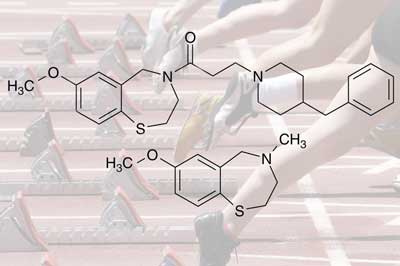So, first we learn of all the ways coffee can increase performance - and now, sweet mother of god, scientists discover that small [SMALL!] amount of dark chocolate can also increase time to fatigue and performance. Nice...
For those who worry that fitness requires nutritional denial, there is good news, with caveats. Auspicious new science suggests that chocolate can have a surprisingly large effect on the body’s response to exercise, although not in the ways that many of us might expect, and certainly not at the dosages most might hope for.
Researchers have known for some time that chocolate has healthful effects, and recent epidemiological studies have shown that people who regularly indulge in moderate amounts of dark chocolate are less likely to develop high blood pressure or heart disease or suffer strokes. But chocolate’s potential role in exercise performance had not been studied, or probably even much considered, until scientists at the University of California, San Diego, and other institutions gave middle-aged, sedentary male mice a purified form of cacao’s primary nutritional ingredient, known as epicatechin, and had the mice work out. Epicatechin is a flavonol, a class of molecules that are thought to have widespread effects on the body.
The mice were given small liquid doses of epicatechin twice a day. A separate control group of mice drank equal amounts of water.
Both groups were divided into two. Half of the animals in each group began a light exercise routine, which consisted of strolling on a treadmill for a short period each day. The regimen was not meant to get the animals into tiptop shape, only to get them moving. After 15 days, all of the animals completed a treadmill test, during which they ran to exhaustion. The researchers also biopsied the animals’ back leg muscles.
By and large, the animals that had been drinking water were the first to give out during the treadmill test. They became exhausted more quickly than the animals that had received epicatechin. Even the control mice that had lightly exercised grew tired more quickly than the nonexercising mice that had been given epicatechin. The fittest rodents, however, were those that had combined epicatechin and exercise. They covered about 50 percent more distance than the control animals.
The muscle biopsies offered some explanation for their dominance. The muscles of all of the animals that had been given epicatechin contained new capillaries, as well as biochemical markers indicating that their cells were making new mitochondria. Mitochondria are structures in cells that produce cellular energy. The more functioning mitochondria a muscle contains, the healthier and more fatigue-resistant it is.
The leg muscles of the mice that had been given epicatechin and exercised displayed far more mitochondrial activity than the leg muscles of the control mice. Even the mice that had drunk epicatechin and not exercised contained markers of increased mitochondrial health, suggesting that the flavonol prompts a physiological reaction even among the sedentary. But that response is greatly heightened by exercise, no matter how slight.
Exactly how epicatechin intensified the mouse muscles’ response to exercise is not yet known, but “it seems likely that muscle cells contain specific receptors for epicatechin,” said Dr. Francisco Villarreal, a professor of medicine at the University of California, San Diego, and one of the authors of the study, which was published last week in The Journal of Physiology. Epicatechin binds to the receptors and “induces an integrated response that includes structural and metabolic changes in skeletal and cardiac muscles resulting in greater endurance capacity,” the study concluded.
Mice are not people, though, and it remains to be seen whether the fitness-boosting effects of epicatechin will be identical in humans, especially since most of us would be getting the substance not in purified liquid form but in chocolate. “Processing destroys epicatechin,” Dr. Villarreal said, so heavily processed milk chocolate contains almost none of the flavonol, while cacao-rich dark chocolate has far more.
And even for those who adore dark chocolate, there is a catch. “A very small amount is probably enough,” Dr. Villarreal said. Extrapolating from his group’s mouse data, he said, five grams of dark chocolate daily, or just a sixth of an ounce — about half of one square of a typical chocolate bar — is probably a reasonable human dose if your aim is to intensify the effects of a workout.
Sadly, “more is not better,” he continued. “More could lessen or even undo” any benefits, he said, by overloading the muscles’ receptors or otherwise skewing the body’s response.
But given human nature, microdoses of chocolate may be impractical, underscoring the difficulties of using nutrition to bolster fitness. Dr. Villarreal’s colleagues regularly filch from his cache of dark-chocolate bars, he said, and despite his admonitions, they invariably finish the entire thing. “I keep telling them that’s too much,” he said. “But it doesn’t matter. They want to eat the whole thing and,” no matter what the expert tells them, “they do.”






